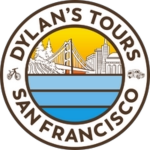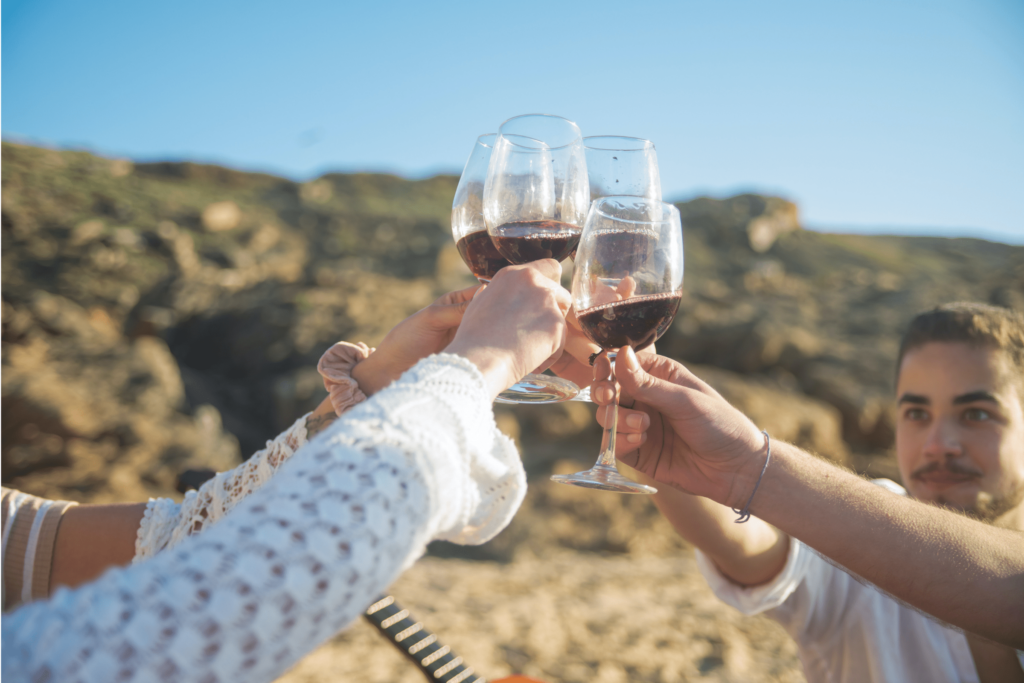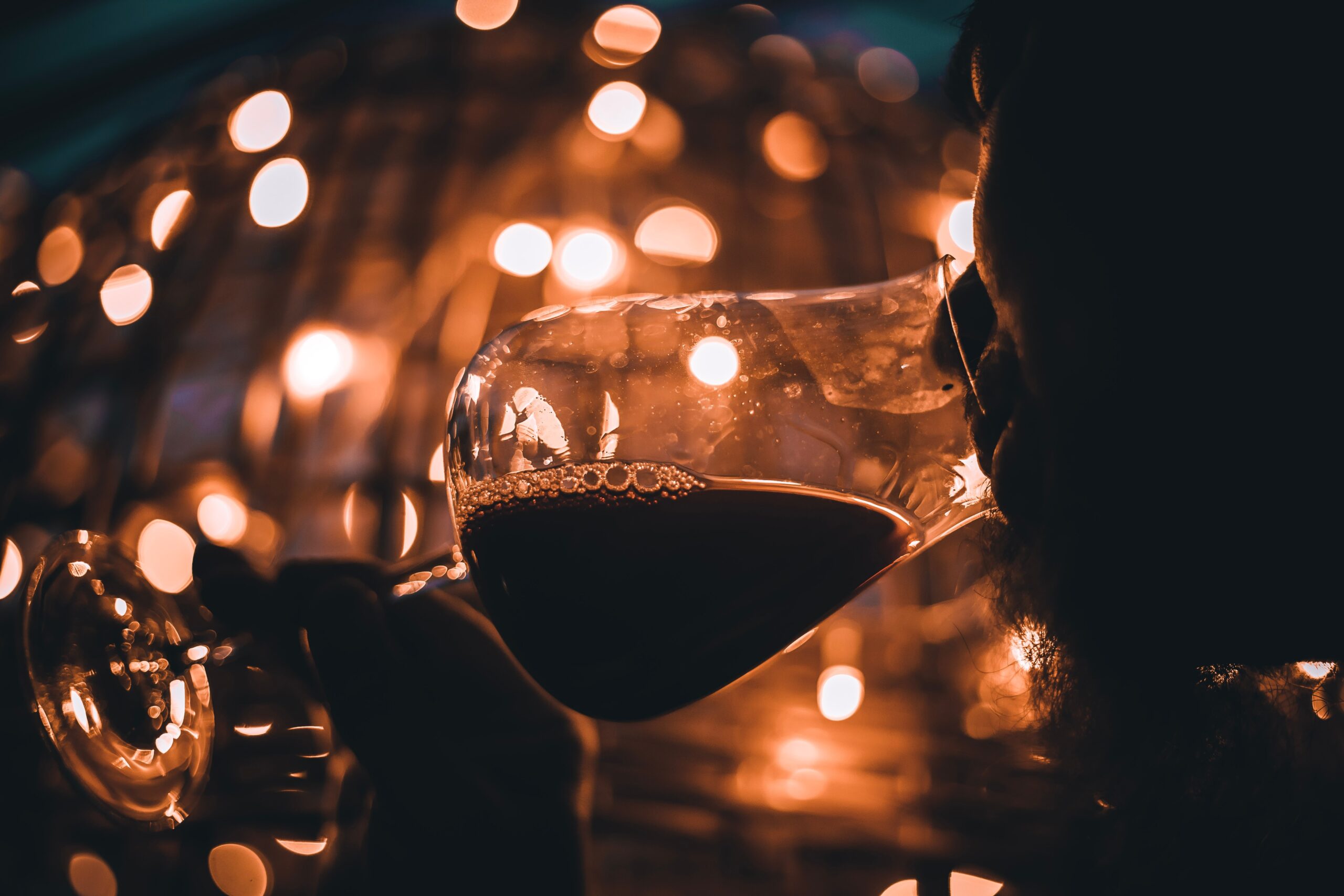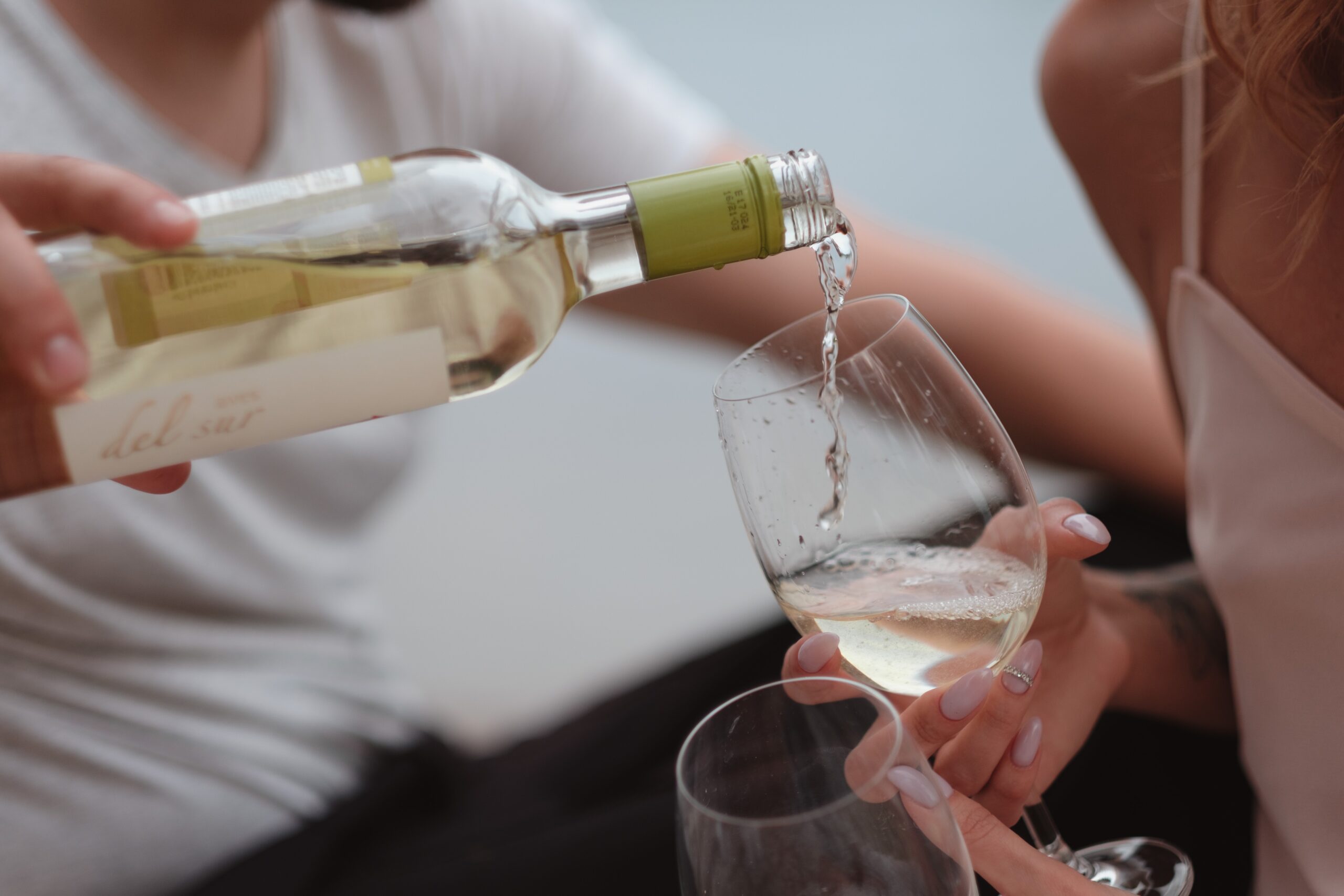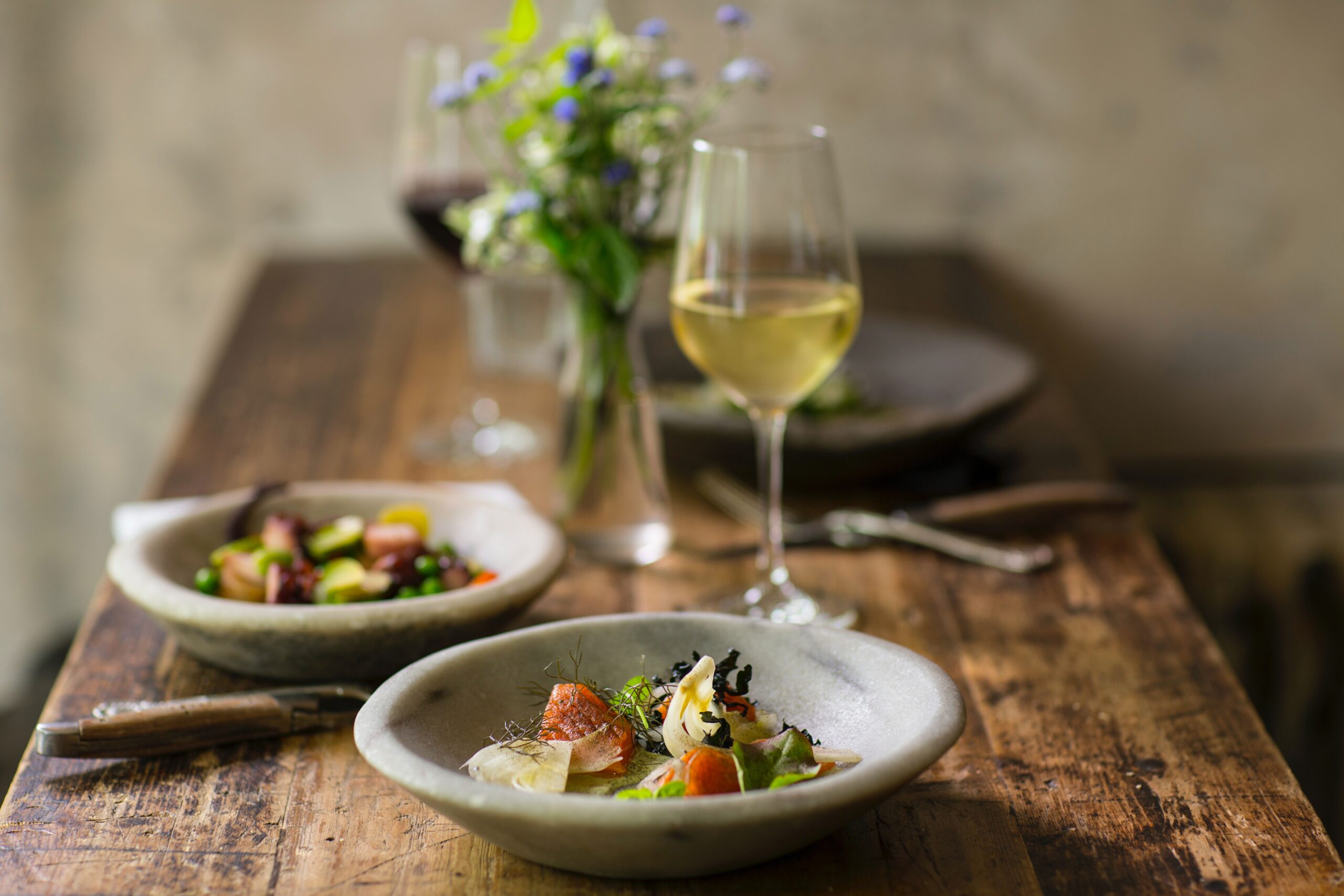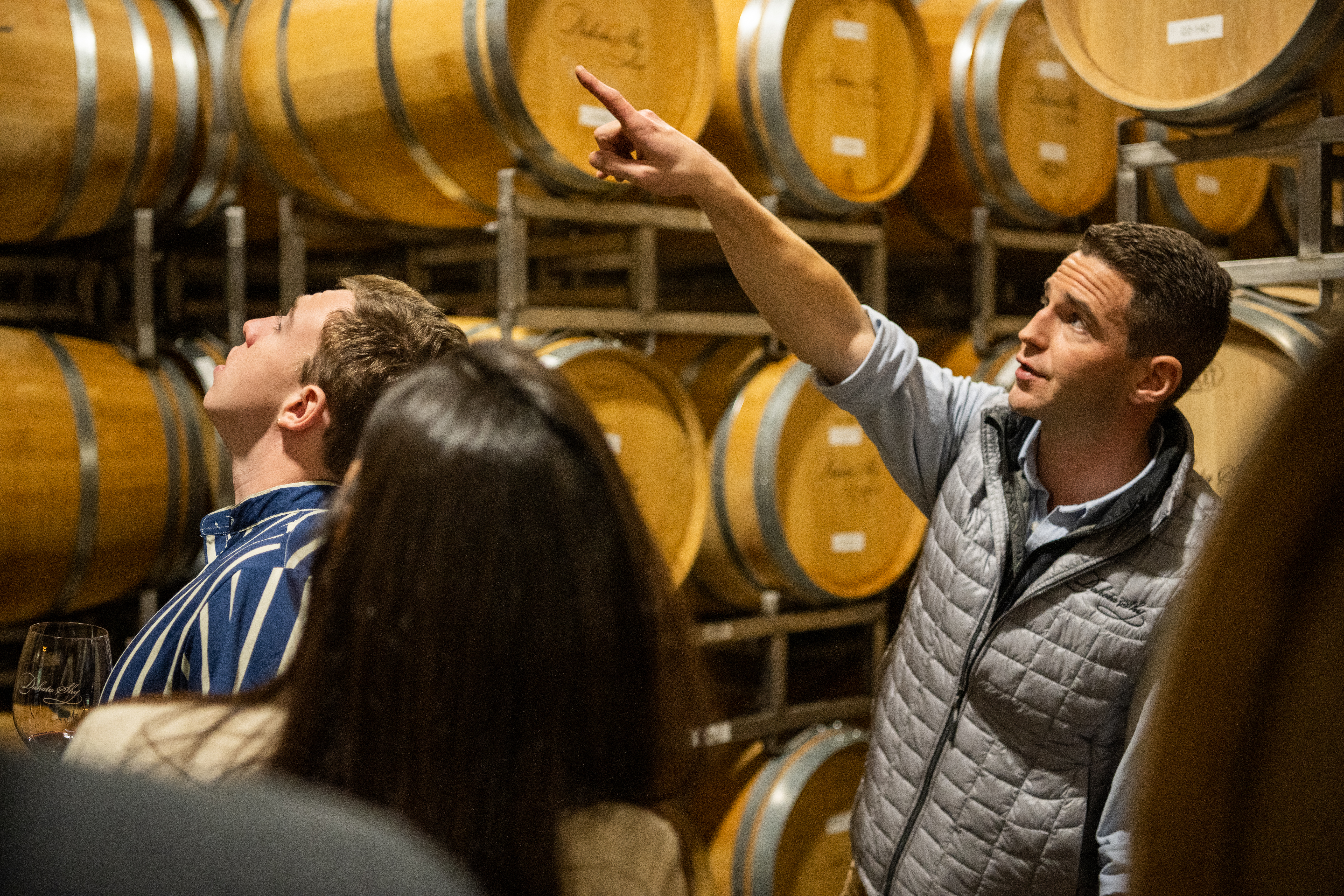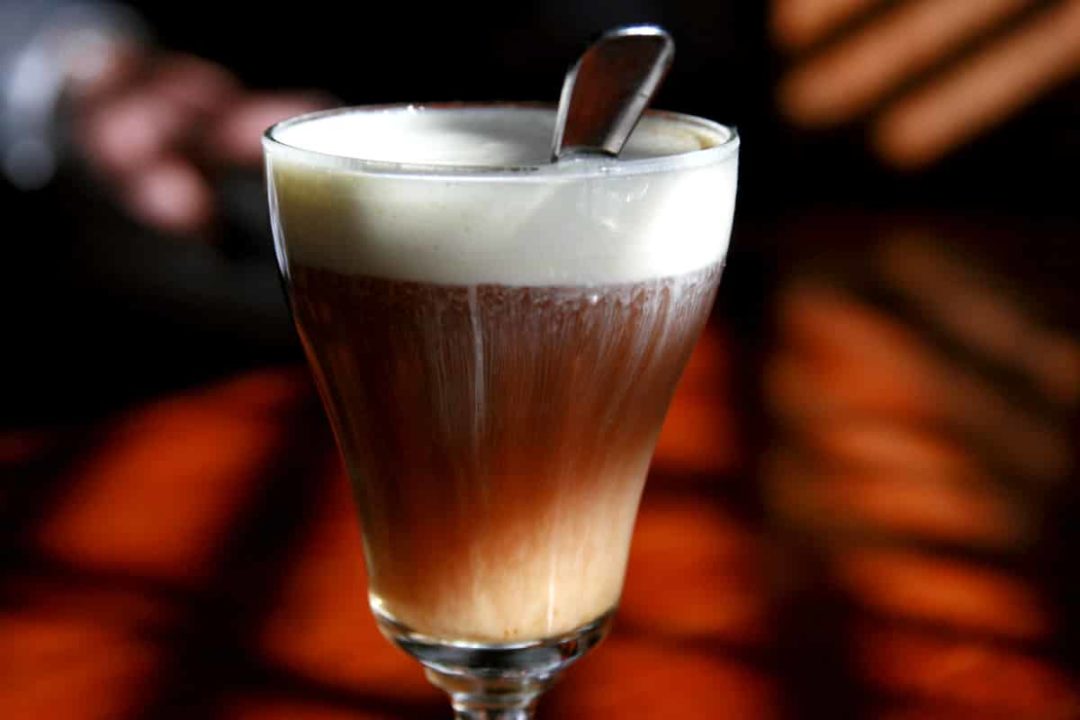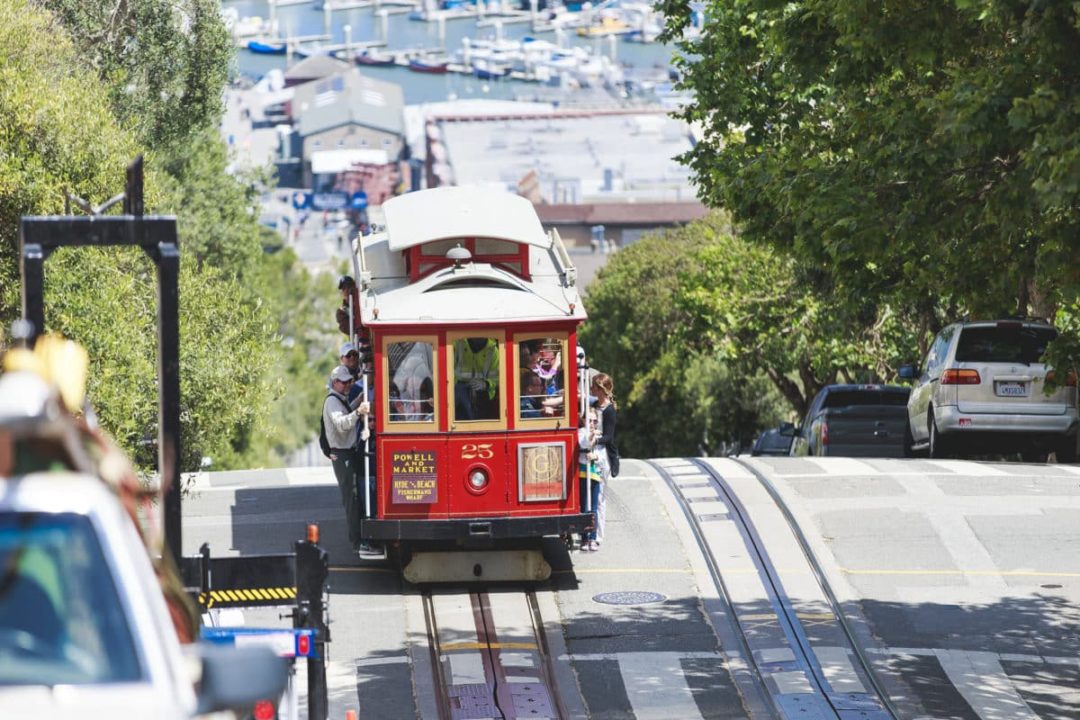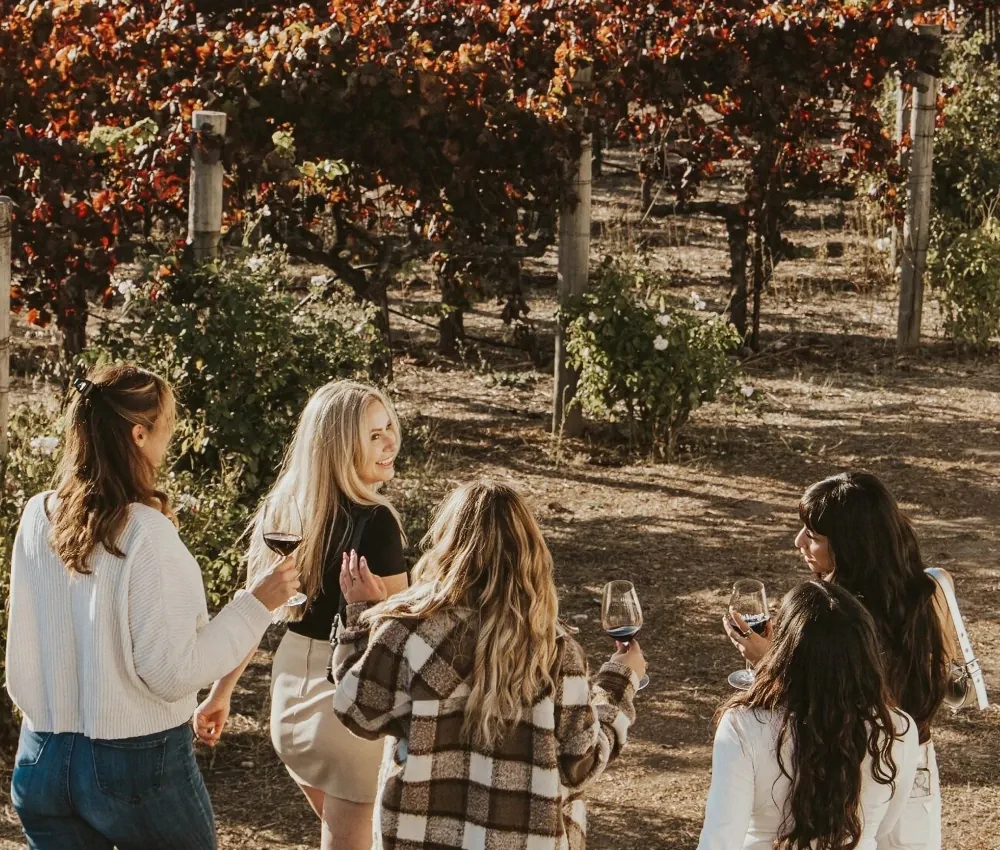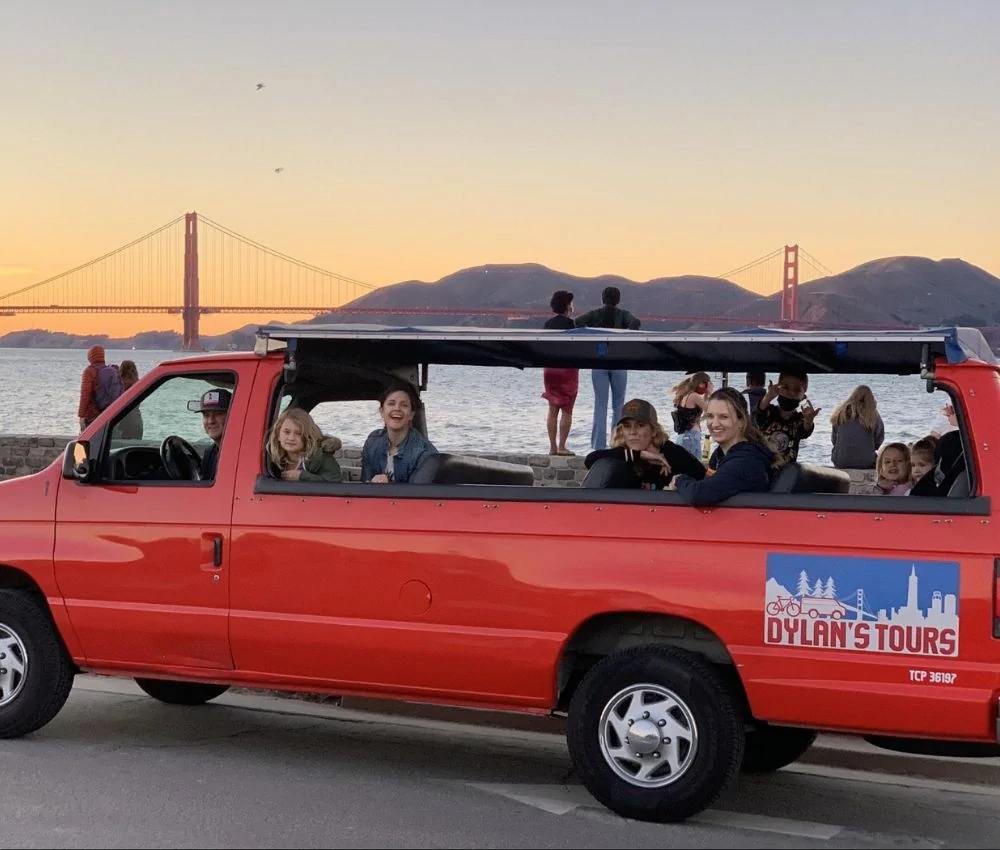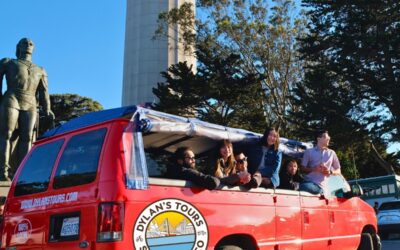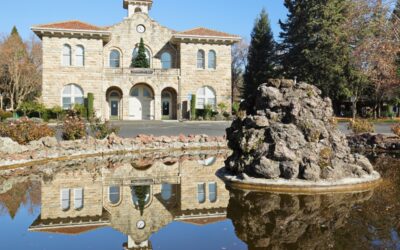The season for wine tasting activities is just around the corner! And that means it’s time to start planning your trips to the many beautiful vineyards of California. But if you’ve never been on a wine tasting tour before, it can be an exciting and slightly daunting experience. You might find yourself asking questions beforehand, like, “How do you even sip wine properly?” or “What on earth is a tannin?” In this guide on wine tasting tips, you’ll discover 5 essential activities to elevate your wine tasting experience.
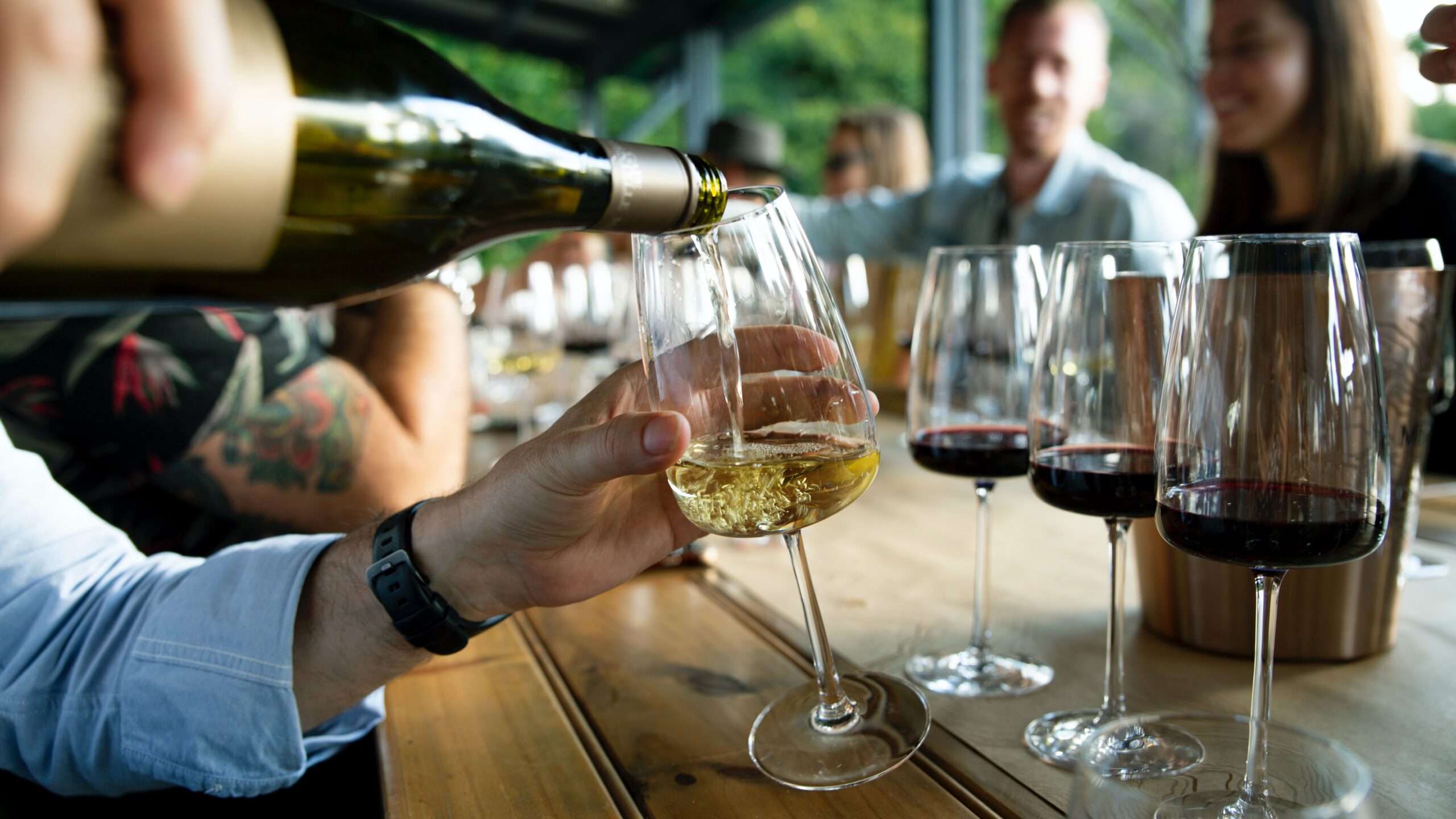
Wine Tasting Activities as an Experience
Wine-lovers have been engaging in wine tasting activities since the beverage’s inception centuries ago. Through the sensory examination of the wine’s characteristics, modern day wine tasting has become a favorite activity in California’s beloved Wine Country. This is because of California’s vineyards’ reputations, especially those of the famed Napa and Sonoma Valleys. They have been supplying the country with some of the best wine in the world for nearly 100 years!
Wine tasting activities allow for visitors to come see their favorite wineries’ vineyards in person, try a variety of their wines, and purchase directly from the producers. The wine tasting experience provides a unique opportunity to see where the grapes are grown, processed, and fermented. Visitors also get to meet the winemakers themselves, learn first-hand about the winemaking processes, and have any questions answered.
Make the Most of Wine Tasting!
As a wine lover, going to a wine tasting experience is one of the most exciting things you can treat yourself to. You’ll certainly want to make the most of your tasting, but if you’re new to these events, it’s nice to have an idea of what you might be able to expect. The good news is we’re here to help! Here are our 5 wine tasting tips to elevate your wine tasting experience.
The ideal wine country tasting tour awaits! Spend a day outside the bustle of the city exploring California’s wine country on a tour of the Napa and Sonoma Valleys. Enjoy wine tastings at three wineries while learning about the region and the processes used to craft wine. Book here!
1. The Basics of Wine Tasting Activities
If you’re at the beginning of your journey into the world of wine tasting activities, you probably have some questions. “How do I reserve a wine tasting experience?,” “What does it entail?,” or “What should I know before I go?” might ring a bell. The easiest way to understand the basics of wine tasting activities is starting with an overview. Knowing how to go wine tasting, wine vocabulary, and the importance of noting your preferences are all a great place to start!
Wine Tasting Tips
To attend a wine tasting experience, you will need to book a tasting in one of their tasting rooms. Some wineries might offer walk-ins, but it’s best to check their website or give them a call before you go. Most wineries will expect you to already have a reservation booked. Be prepared to show proof of your booking with a receipt or email provided by the winery. In addition, most wine tasting activities range anywhere from $45–$90, and you’ll want to bring money for tipping your pourer, as well as buying a bottle (or two!) of wine to bring home with you.
We recommend 2 or 3 winery visits in one day of wine tasting. Most experiences take a minimum of 90 minutes and there is some travel time to factor in between. To make things as seamless as possible, we recommend choosing a wine tasting tour. Going on a wine tasting tour offers all the luxuries and convenience without the stress of coordinating your itinerary and transportation!
Quick wine tasting tips: Avoid wearing perfume or cologne, as it can mask the aroma of the wine, and smell is important to the wine tasting experience. Be sure to also dress comfortably, since you’ll be walking around the vineyards and cellars!
Wine Activities Vocabulary to Know
Now, let’s talk about wine tasting terminology! These wine tasting activities terms might come up during your vineyard visits and are helpful to describe your experience.
- Acidity is the tartness/crispness of a wine that makes your mouth salivate. Wines lacking in acidity are referred to as flat or flabby.
- When wine has a balance, it means all the components – alcohol, acidity, sugars and tannin – are working in harmony.
- The process of letting a wine open up via the introduction of air is letting it breathe.
- The body of a wine is the impression of weight on your palate – light, medium, and full are common body qualifiers. For example, a full-bodied wine is a wine that is high in alcohol and flavors.
- Mouthfeel refers to the way the wine feels on your palate – it can be silky, smooth, rough, chewy.
- A wine’s smell or overall aroma is also called the “nose” of the wine.
- Lastly, tannins are extracted from grape seeds and skins, and they add the astringent or chalky body and structure to wine.
Your Personal Wine Tasting Preferences
After learning about the wine vocabulary, you should have a better understanding of what you prefer in a wine. When wine tasting, you’ll want to engage your senses to identify the body, acidity, mouthfeel, and tannins. Of course, don’t feel pressured to be able to identify all of these things right away! Some wines are favored for their mystery in why they taste so good. We’ll go over the 3 major senses to engage with for the best wine tasting experience next.
2. Engage Your Senses
The 3 most important senses to pay attention to while participating in wine tasting activities are sight, smell, and taste. Focusing on these senses will make the process of tasting much more natural and enjoyable for you! Not only will you feel more of a connection to the wine when it meets your senses, but you’ll remember what you like or don’t like about the wine for future reference.
Use Your Sight to Observe the Wine
See – Observe the color and clarity of the wine. Color can be affected by age, varietal, and barrel process. If you are new to wine tasting, you can hold the glass in front of a white wall or background. The color of wine gives a clue of its age. Normally, white wines gain color with age, while red wines lose their color intensity. Therefore, if you come across a red wine with a sharp color, know that it is relatively new. An old red wine will be tawny brown or burgundy in color. Nevertheless, wines are fun to look at irrespective of their age. Swirl the wine around in your glass by lightly twirling the stem of the glass. This allows some oxygen into the wine that will help its aromas open up.
Use Your Smell to Capture the Aromas
Sniff – Hold the glass a few inches from your nose, then let your nose drop into the glass. The wine is smelled before tasting because our sense of smell is far sharper than our sense of taste. Even when we are drinking or chewing something, much of our perception comes from our nose rather than our taste buds. Therefore, for a better experience try to sniff the wine before taking the first sip. Older wines often have nuanced, subtle aromas that are difficult to identify. Don’t worry if you can’t always recognize an aroma.
Use Your Taste to Distinguish Flavors
Sip – Take a sip, and let it linger in your mouth. Roll the wine around in your mouth, exposing it to all of your taste buds. Experts advise that to start drinking wine, it should always be sipped in small quantities and savored before being swallowed. It maximizes the experience as well as the taste of the wine and lets the taste settle down in our memory. Also, a common and sometimes unexpected practice of wine tasting activities is actually spitting the wine out! It’s a totally acceptable common practice to spit out or pour out wine that you don’t like. No need to worry about wasting wine. Practice spitting at home before going wine tasting. Since you’re all spitting into a communal bucket, it’s important to balance speed, force, and distance so you don’t get backsplash on you!
3. Learn About the Wine
One of the best parts about a great wine tasting experience is getting to learn about wine! Learning about your favorite wines from the very producers who make them is an incredibly special experience. You’ll want to come prepared with plenty of questions about the wine-making process, history, and unique qualities!
Engage with the wine pourer, and learn about the wine-making process.
The wine pourer and tasting room staff will be able to answer your questions about the wine-making process. Wine connoisseurs appreciate your interest in their pursuit, and will be happy to give you recommendations based on your preferences.
Ask questions about the wine’s origin and history.
Every winery has a story behind its origin. And they love sharing their storied history with fellow wine lovers! Ask about when the winery first opened, who runs it now, and learn about the many different generations of winemaking nearby. You’ll be surprised to learn just how deep those grapevine roots go!
Learn about the winery itself and its unique qualities.
Learn about the history of the vineyard or why they chose a specific cultivar of grape to make their wine. Tasting room staff and winemakers are a great resource for curious minds—both professional and amateur—so ask them any questions you may have regarding the process or about wine in general. They love the enthusiasm!
Want to create your own wine tasting experience with your friends, family, or co-workers? Our private group tours are perfect for small groups, school groups, company outings, church groups, wedding parties, or any private event. We can cater to groups from 2-200 people. Enjoy private tours of Wine Country to the top wineries of your choice! Learn more here.
4. Pair the Wine with Food
If you go wine tasting on an empty stomach, you can accidentally get drunk quickly or wind up with a headache. This will make it difficult to enjoy the rest of the experience. Combat this by eating a light meal before going to wine tasting activities to give yourself something to soak up the alcohol. You can also pack a sandwich to eat along the way, as some wineries allow outside food for picnicking. Often wineries will have some cheese and charcuterie platters readily available to pair with your wine!
Food Pairing Basics
Learning food and wine pairings will help elevate your wine tasting experience, either in the tasting room or at home. A great food and wine pairing creates a balance between the components of a dish and the characteristics of the wine. As much as pairing food and wine is complex, the basics are easy to grasp.
Wine Tasting Tips for Pairing with Food
If you’re just getting started, you’ll find these tried-and-true methods to produce consistently great pairings helpful. That said, as you get more familiar with different wines, you’ll become confident and can experiment with breaking the rules!
Remember, the wine should be more acidic or sweeter than the food. It should also have the same flavor intensity of the food (not overwhelming). Red wines pair best with bold flavored meats, like red meat. White wines pair best with light-intensity meats (think fish or chicken). Bitter wines, like reds, are best balanced with fat. If you have a sauce in your dish, it is better to match the wine with the sauce than with the meat. Some classic wine and cheese pairings are Champagne and Brie, Cabernet Sauvignon and Aged Cheddar, or Pinot Noir and Gruyere.
5. Take a Tour of the Wineries
Taking a private tour of the wineries you visit is highly recommended. We recommend this winery tour from San Francisco through Napa and Sonoma. Discover the incredible wineries and beautiful rolling vineyards of Sonoma and Napa Valley via luxury coach transportation. You will also have plenty of time to enjoy a delicious lunch at Sonoma Square Plaza, between your winery visits. The area also offers options for shopping to leisurely enjoy during your break. Savor a relaxing and delicious lunch between all of the winery fun!
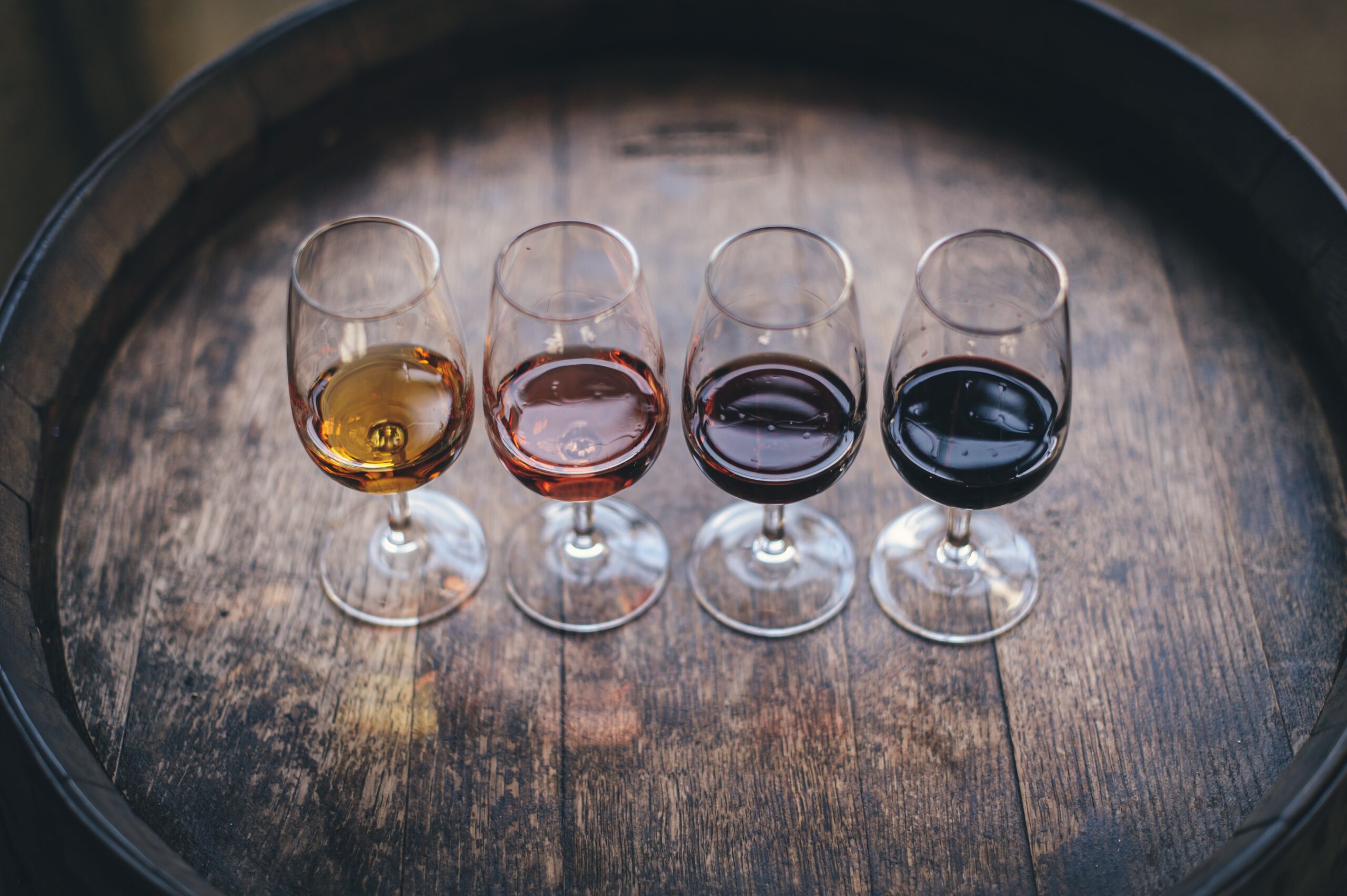
Cheers, and Happy Wine Tasting!
We hope you are leaving this guide feeling more confident in your wine tasting abilities! We know how daunting it may be to go to your first wine tasting activities. But now, you should be able to relax and enjoy your time with plenty of knowledge about what to expect. The wine tasting experience is often misunderstood as a very serious event. But really, it should be fun, more than anything else!
